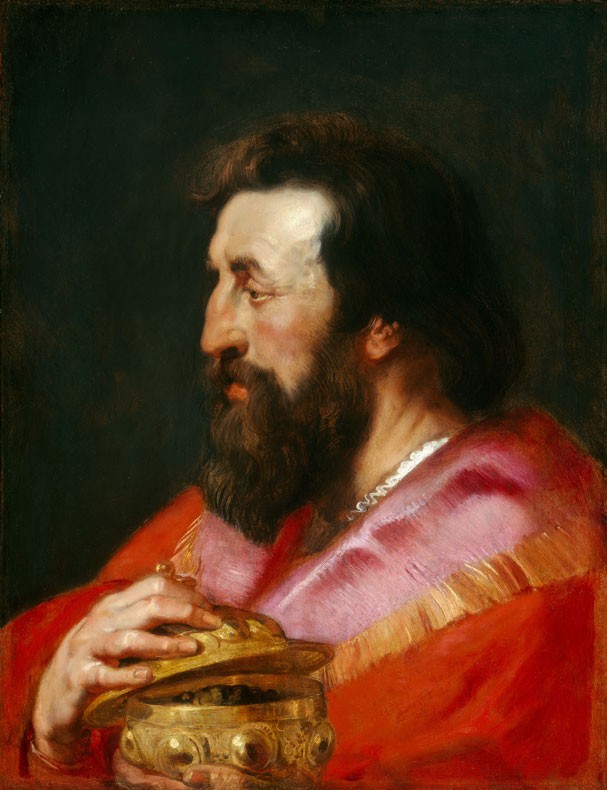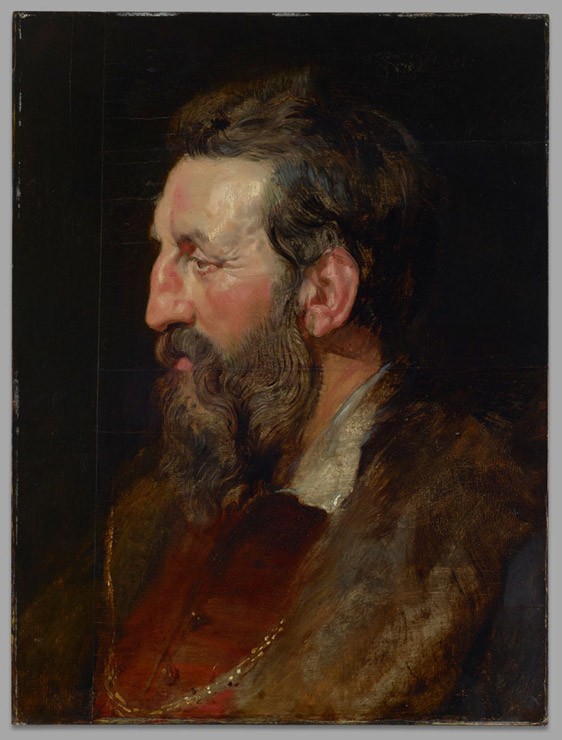The second king opens his vessel to reveal frankincense, an aromatic substance derived from the sap of Boswellia trees found in the Middle East, North Africa, and India. Biblical commentators interpreted the gift, which is burnt as incense, as representing sacrifice, prayer, and the recognition of Christ’s divine majesty.
Rubens kept a number of studies of heads in his studio for use when composing paintings, a practice he may have known from an earlier Antwerp artist, Frans Floris, as well as artists he had met while in Italy. Whether originating from his imagination or made from life after models he posed in the studio, these character studies represented an array of types, from youth to old age, with varying expressions.



